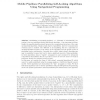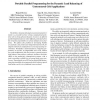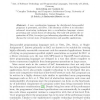365 search results - page 27 / 73 » Automatic Performance Debugging of SPMD Parallel Programs |
107
click to vote
IEEEPACT
1999
IEEE
15 years 3 months ago
1999
IEEE
Automatic parallelization of general-purpose programs is still not possible in general in the presence of irregular data structures and complex control-flows. One promising strate...
106
click to vote
LCPC
1995
Springer
15 years 3 months ago
1995
Springer
Abstract. The technique of flattening nested data parallelism combines all the independent operations in nested apply-to-all constructs and generates large amounts of potential pa...
HIPC
2005
Springer
15 years 5 months ago
2005
Springer
Abstract. Parallelizing a sequential algorithm—i.e., manually or automatically converting it into an equivalent parallel distributed algorithm—is an important problem. Ideally,...
IPPS
1999
IEEE
15 years 3 months ago
1999
IEEE
The ability to dynamically adapt an unstructured grid (or mesh) is a powerful tool for solving computational problems with evolving physical features; however, an efficient parall...
117
click to vote
ERSHOV
2006
Springer
15 years 3 months ago
2006
Springer
A new coordination language for distributed data-parallel programs is presented, call SNet. The intention of SNet is to introduce advanced structuring techniques into a coordinatio...



